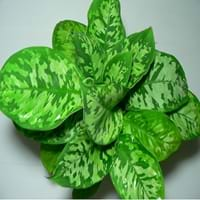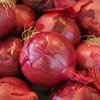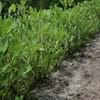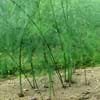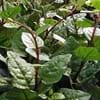Life Span
Perennial
Perennial
Type
Vegetable
Tender Perennial
Origin
World/Pandemic, North America, Europe, Russia/Siberia, Northern Africa, Asia, India
Hybrid origin
Types
Not Available
Not Available
Number of Varieties
Not Available
Habitat
Cropland, Farms, gardens
Humid climates
USDA Hardiness Zone
Not Available
9-12
AHS Heat Zone
Not Available
12-10
Sunset Zone
A1, A2, A3, H1, H2, 1a, 1b, 2a, 2b, 3a, 3b, 4, 5, 6, 7, 8, 9, 10, 11, 12, 13, 14, 15, 16, 17, 18, 19, 20, 21, 22, 23, 24
H1, H2, 24
Habit
Upright/Erect
Clump-Forming
Flower Color
White, Yellow green
Yellow green
Flower Color Modifier
Bicolor
Bicolor
Fruit Color
Not Available
Not Available
Leaf Color in Spring
Not Available
Green, Purple, Light Green, Burgundy, Silver
Leaf Color in Summer
Green, Gray Green
Green, Purple, Light Green, Burgundy, Silver
Leaf Color in Fall
Green, Gray Green, Yellow green
Green, Purple, Light Green, Burgundy, Silver
Leaf Color in Winter
Not Available
Light Green
Leaf Shape
Linear
Heart-shaped
Plant Season
Not Available
Spring, Summer, Fall, Winter
Sunlight
Full Sun, Partial Sun
Partial shade, Full Shade
Type of Soil
Loam, Sand
Loam, Sand
The pH of Soil
Neutral
Acidic, Neutral
Soil Drainage
Well drained
Well drained
Bloom Time
Late Spring, Early Summer
Indeterminate
Tolerances
Drought
Drought
Where to Plant?
Ground, Pot
Container, Ground, Pot
How to Plant?
Seedlings, Sets
Divison, Seedlings
Plant Maintenance
Medium
Low
Watering Requirements
Keep the ground moist but not water-logged, Requires a lot of watering, Water twice a day in the initial period
Requires watering in the growing season
In Summer
Lots of watering
Lots of watering
In Spring
Moderate
Moderate
In Winter
Average Water
Average Water
Soil pH
Neutral
Acidic, Neutral
Soil Type
Loam, Sand
Loam, Sand
Soil Drainage Capacity
Well drained
Well drained
Sun Exposure
Full Sun, Partial Sun
Partial shade, Full Shade
Pruning
Remove damaged leaves, Remove dead branches, Remove dead leaves
Cut or pinch the stems, Remove damaged leaves, Remove dead branches, Remove dead leaves
Fertilizers
All-Purpose Liquid Fertilizer
fertilize every 2-3 weeks while growing
Pests and Diseases
Red blotch
Not Available
Plant Tolerance
Drought
Drought
Flowers
Showy
Insignificant
Flower Petal Number
Single
Not Available
Fragrant Bark/Stem
Yes
No
Foliage Texture
Medium
Coarse
Foliage Sheen
Matte
Glossy
Attracts
Not Available
Not Available
Allergy
no allergic reactions
Mouth itching, Throat itching, Toxic
Aesthetic Uses
Not Used For Aesthetic Purpose
Cottage Garden, Landscape Designing
Beauty Benefits
Not Available
Not Available
Edible Uses
Yes
Not Available
Environmental Uses
Air purification
Indoor Air Purification, Very little waste
Medicinal Uses
Asthma, Bronchitis, cholesterol-lowering, Cough, Diabetes, Digestion problems, Diuretic, High blood pressure
Rheumatism
Part of Plant Used
Whole plant
Rhizomes
Other Uses
Culinary use
Leaves used for wrapping food
Used As Indoor Plant
Yes
Yes
Used As Outdoor Plant
Yes
Yes
Garden Design
Edible, Herb / Vegetable
Container, Groundcover, Houseplant, Tropical
Botanical Name
ALLIUM cepa 'Burgundy'
HOMALOMENA Wallisii
Common Name
Garden Onion, Red Onion
Homalomena
In Hindi
लाल प्याज
Homalomena
In German
Rote Zwiebel
Homalomena
In French
Oignon rouge
Homalomena
In Spanish
Cebolla roja
Homalomena
In Greek
Κόκκινο κρεμμύδι
Homalomena
In Portuguese
Cebola vermelha
homalomena
In Polish
Czerwona cebula
Homalomena
In Latin
Red Cepa
Homalomena
Phylum
Magnoliophyta
Magnoliophyta
Class
Liliopsida
Liliopsida
Clade
Angiosperms, Monocots
Angiosperms, Monocots
Tribe
Not Available
Not Available
Subfamily
Allioideae
Not Available
Number of Species
Not Available
Importance of Red Onion and Homalomena
Want to have the most appropriate plant for your garden? You might want to know the importance of Red Onion and Homalomena. Basically, these two plants vary in many aspects. Compare Red Onion and Homalomena as they differ in many characteristics such as their life, care, benefits, facts, etc. Every gardener must at least have the slightest clue about the plants he wants to plant in his garden. Compare their benefits, which differ in many ways like facts and uses. The medicinal use of Red Onion is Asthma, Bronchitis, cholesterol-lowering, Cough, Diabetes, Digestion problems, Diuretic and High blood pressure whereas of Homalomena is Rheumatism. Red Onion has beauty benefits as follows: Not Available while Homalomena has beauty benefits as follows: Not Available.
Compare Facts of Red Onion vs Homalomena
How to choose the best garden plant for your garden depending upon its facts? Here garden plant comparison will help you to solve this query. Compare the facts of Red Onion vs Homalomena and know which one to choose. As garden plants have benefits and other uses, allergy is also a major drawback of plants for some people. Allergic reactions of Red Onion are no allergic reactions whereas of Homalomena have Mouth itching, Throat itching and Toxic respectively. Having a fruit bearing plant in your garden can be a plus point of your garden. Red Onion has no showy fruits and Homalomena has no showy fruits. Also Red Onion is not flowering and Homalomena is not flowering . You can compare Red Onion and Homalomena facts and facts of other plants too.

